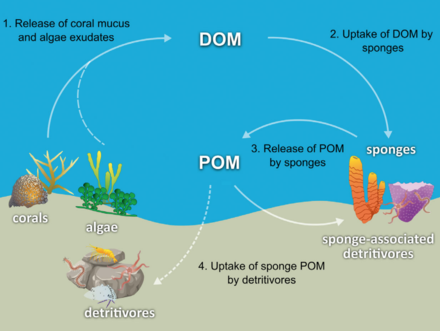What are the four features of the sponge?
General characteristics of sponges: Habitat: Advertising :. Body shape: Those bodies are porous, that is, they have pores. .. Symmetry: Most sponges are asymmetric. .. Germ :. Organizational level :. Body wall :. Canal system :. Skeletons (Figure Sponge: Letters and Classification
Sponge (called "Belinda") has a variety of behaviors such as cramps, ripples, and wrinkles (Figure 2; Leys and Hamonic2019). Many movements of the sponge. Although difficult to connect to the stimulus, some large clinges are clearly associated with the storm and their arrival could be detected by changes in pressure. March. 2019 г. Characteristics. Demoponge has a soft body. Most species contain a skeleton composed of needle-like bodies, which may be composed of calcareous, siliceous, or protein fibers. , There may be some combination of these elements. Most members of this class are leuconoids. As stalkless animals, sponges are vulnerable to various predators. Pointed needles Serves as one way of defense against predators. Sponges also protect themselves by producing chemically active compounds. As ill-mannered creatures, sponges do not need to take action. Hmm. They stay in one place for the rest of their lives. At any time, they take in water from many pores throughout the body and filter food particles from there. There is no other behavior other than this behavior and reproduction. Sand Hoppers are shellfish, sponges. They live in the frigid Antarctic waters, but they are also land creatures. Like many other polar animals, they are incredible. It's big. The sandhopper is named because it jumps far away when disturbed.
Because it's a sticky creature, the sponge needs to behave. No. They stay in one place for the rest of their lives. At any time, they take in water from many pores throughout the body and filter food particles from it. There is no other behavior other than this behavior and reproduction.
What are the characteristics of ordinary sponge?
Ordinary sponge often has a bright color and can grow to the largest of all sponges. Ordinary sponges make up more than 90% of all living sponge species. Calcareous sponges are the only group of sponges that have needles made of calcium carbonate.
How does sponge protect itself?
1. Action. Sponges adhere to the surface of the material in which they live. However, some of them can penetrate deep into corals, rocks and shells. They protect themselves by stripping off the spicules of the sponge and forming a dense carpet that prevents echinoderms from preying on them.
What kind of behavior does the sponge do other than reproduction?
There is no other behavior other than this behavior and breeding. Sponges breed both sexually and asexually and have different tastes depending on the species. When they reproduce sexually, they lay eggs by expelling a cloud of sperm from the upper part of their body.
What kind of sponge inhabits the frigid sea?
A type of sponge called a glass sponge can easily extract food from these resource-poor waters with the help of a very porous structure, so it is generally frigid seas and tropical and temperate zones. Inhabits the depths of the sea.
What are the three characteristics that represent a sponge?
Sponges are multicellular, heterotrophic, lack cell walls, and are similar to other animals in that they produce sperm cells. Unlike other animals, they lack true tissues and organs.
What kind of feeding behavior does the sponge use?
Since the sponge is sessile and does not move, it filters water to feed. Therefore, they are known as filter feeders. Filter feeders filter water

Below you will find two helpful answers on a similar topic. 👇
Where in the body has the highest blood pressure?What animals look like rabbits?
